Famed Explorer Bertrand Piccard On Flying—And Floating—Around The World
Piccard shares details of his famous flights, fears of getting shot down over Sudan, and the secrets to his success.
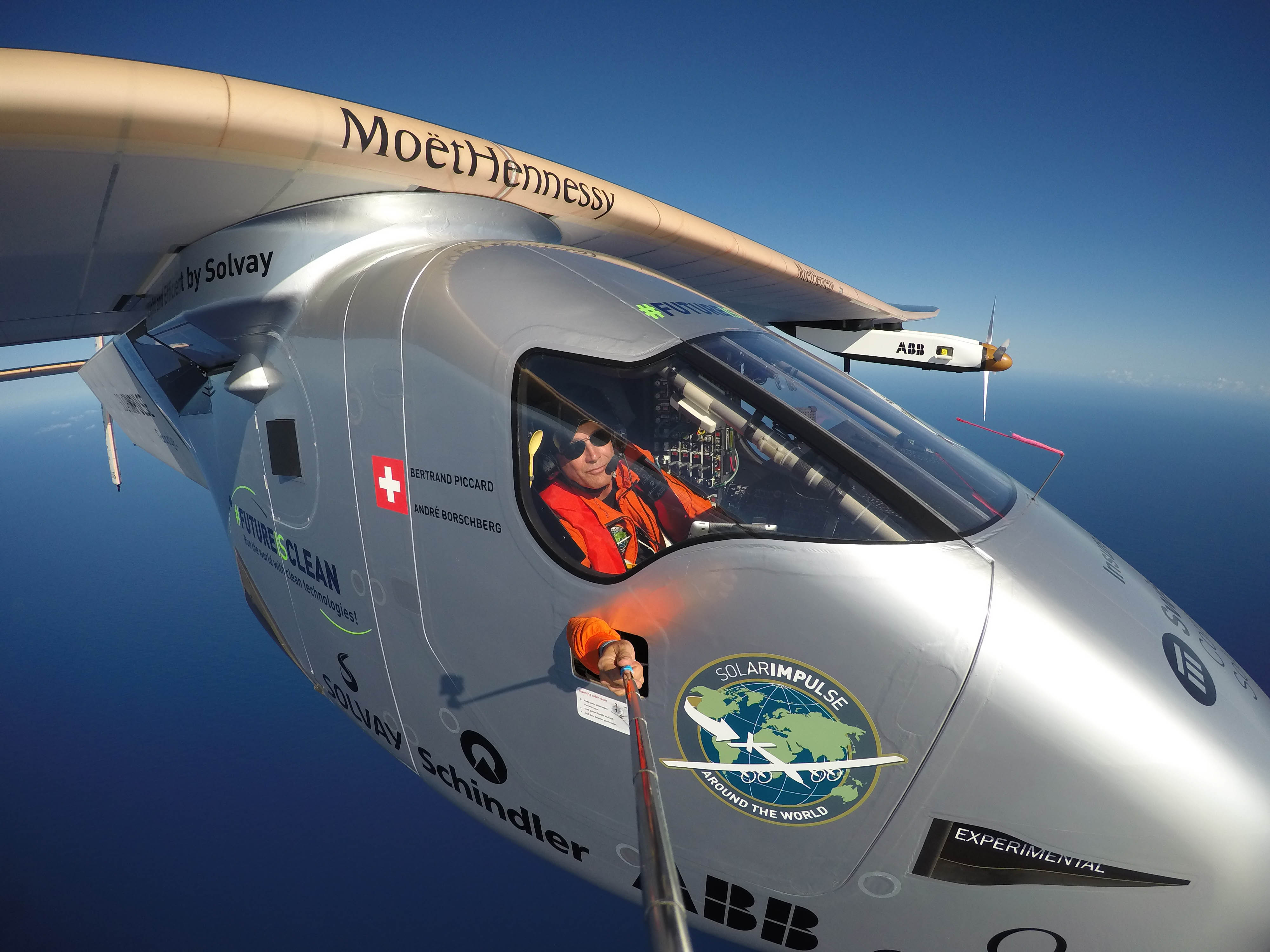
This past spring Maxim had the honor of attending Yacht Club de Monaco’s annual Oceans Week, which for the first time partnered with legendary New York institution The Explorers Club. Founded in 1953 by Prince Rainier, YCM has a long history of not just luxury yachting but true nautical expedition. Meanwhile The Explorers Club is the not-so-secret cabal of the world’s most acclaimed explorers, scientists and adventurers since 1904.
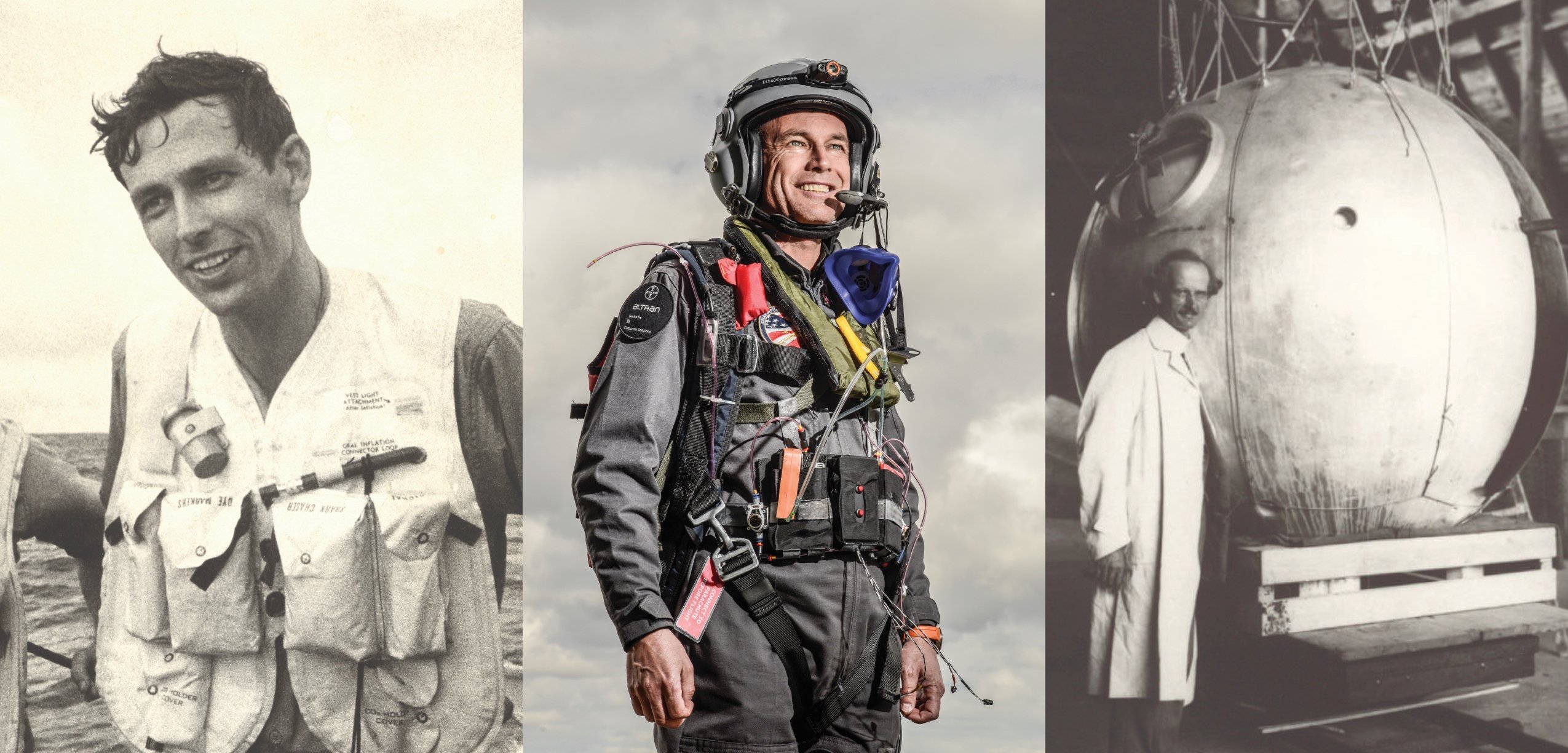
Think true giants like Neil Armstrong and Buzz Aldrin (first humans on the moon), Robert E. Peary and Roald Amundsen (first to the North and South Poles, respectively), Sir Edmund Hillary (first to summit Mt. Everest), Jacques Piccard and Don Walsh (first to dive the Mariana Trench) and Prince of Monaco Albert I—ruler of Monaco from 1889 to 1922. A distinguished oceanographer and Arctic explorer in his own right, Albert I established the Grimaldi royal family’s long-standing commitment to aquatic caretaking.
During Oceans Week, we had the kismet of sitting next to one of the great explorers of our age, Bertrand Piccard—grandson of Auguste Piccard, the first man to reach the stratosphere (and namesake to Star Trek character Jean-Luc Picard), and son of the aforementioned Jacques. This is the type of American and European exceptionalism that only happens when the Monaco Yacht Club collaborates with The Explorers Club. On that very day, March 21, Piccard celebrated the 25-year anniversary of his record-breaking circumnavigation of the Earth in a balloon aboard the Breitling Orbiter 3.
“KNOWING THAT MY GRANDFATHER WAS A MEMBER OF THE EXPLORERS CLUB, MY FATHER WAS A MEMBER OF THE EXPLORERS CLUB, TO BE CELEBRATED THERE WAS THE HIGHLIGHT OF IT.”
He then followed up his accomplishment with Solar Impulse in 2015—the first full circumnavigation of the globe in a solar-powered plane. The Swiss psychiatrist now prepares for his third globe-circling in a hydrogen-powered plane, the Climate Impulse, to further promote clean technologies. During our lunch, Piccard shared previously unknown details of his various flights, the fears of getting shot down over Sudan, the joys of beating billionaire Richard Branson and the secrets to his success earned only through the crucible of persistence. Read below to hear the words straight from the mouth of a living legend.
What was the initial inspiration for Breitling Orbiter 3?
If you go 30 years back, it was considered to be the last grail of aviation. So there were Richard Branson, Steve Fossett, eight other teams who wanted to be the first around the world in a balloon before the end of the century. And Budweiser had promised the price of $1 million if they succeed. I’m an explorer, so I entered the race. They had all three tried and failed before. It was interesting because there were all these attempts all the time, so there was a huge suspense.
What supplies did you bring?
We had to store water and food for 20 days. We had some spare, so it was for 25 days. The life raft, dry suits, parachute, helmets, medications, batteries. We had the bunk, so there was a pillow and two duvets, like in a hotel. When it was Brian Jones’s turn to go in bed, I was putting two little chocolates on the pillow for him. When he was waking me up in the middle of the night to take over the shift, he was preparing a cup of tea for me. It was very, very elegant.
And then he brings your tea with white gloves?
Not the white gloves, but the flying suit. It was so funny because we had eight hours each to rest and eight hours together in the cockpit. So we had a good time in the cockpit, flying the balloon, doing everything. And he’s British, so we had the five o’clock tea in the cockpit just before the sun set. They were really nice moments; it was not always stressful. But sometimes we had real stress—not enough fuel, not enough gas, air traffic restrictions.
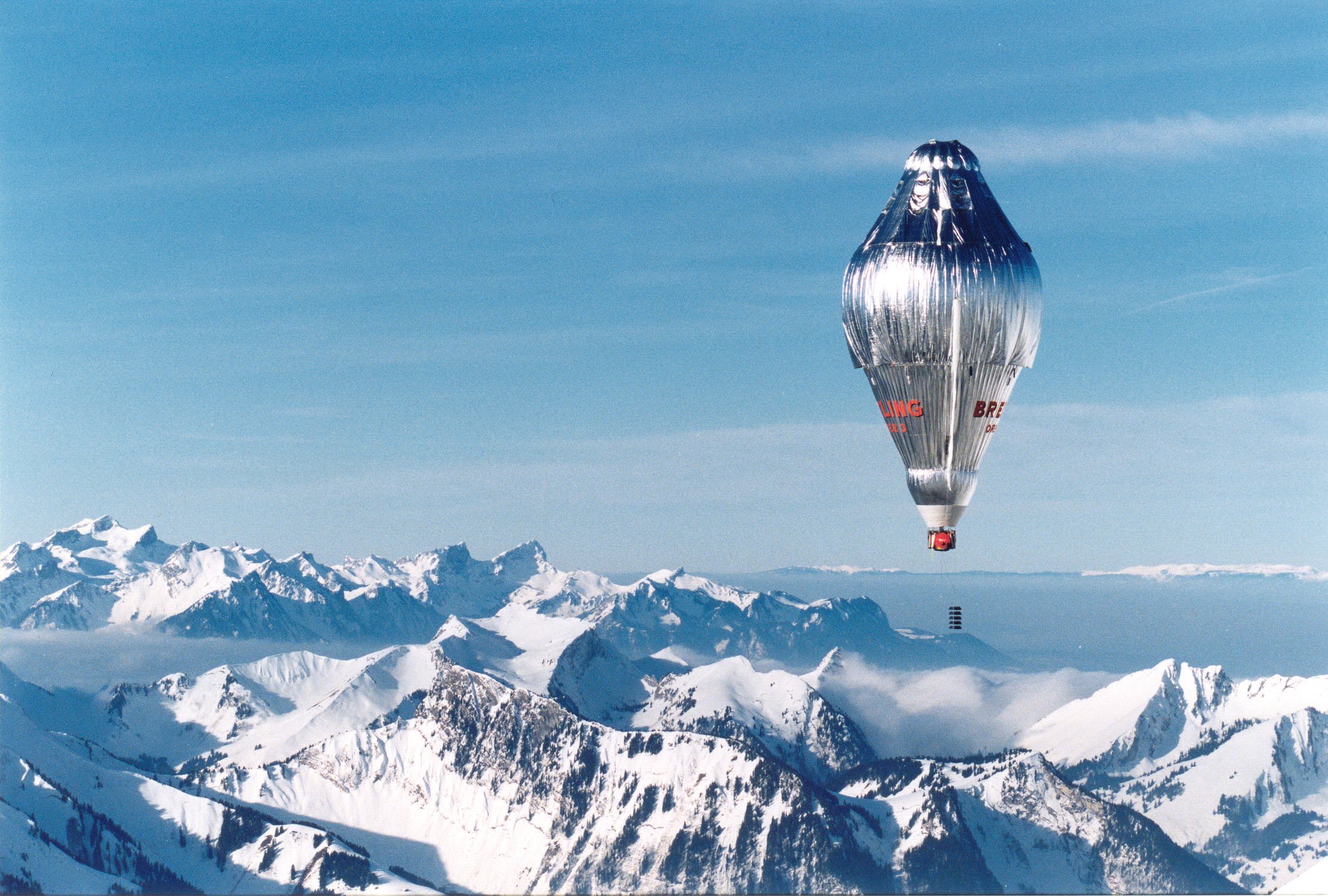
We’re heading straight for Yemen on the area on the map that was red, and it was written, “Any aircraft penetrating this area will be shot down without warning.” We’re going straight there, and our air traffic controllers had to negotiate the transit. Then when we arrived in Japan, there was a military exercise among the Japanese, Koreans and Americans. So they had missiles, drones, airplanes, submarines everywhere. And we said, “Sorry guys, but we have to cross.” They said, “You cannot cross.” And the guy on the radio was saying, “Very hot, very hot, shooting everywhere.” I say, “I’m sorry, we cannot stop, we’re in the wind. Just stop shooting for an hour.” When you’re in the jet stream at 100 miles an hour you cannot stop because there’s a military exercise somewhere. You just have to go through and hope it will go well.
That’s insane. What flag did you fly?
I had a Swiss flag, which a lot of people confused with the Red Cross. But since 25 years, every 21st of March, I’m thinking about this flight with my close friends and my family. And today I can share all this with a lot more people, and this pleases me a lot. Because it’s not just a flight around the world nonstop in a balloon, it’s everything that was happening at the time.
Thirty years ago, it was the last thing of aviation that had not been achieved. It was like the last grail. So there were American teams, British teams, Australian teams, European teams who were trying to do it and find the way to succeed, which was actually difficult because you need to keep a balloon in the air for about 20 days. And during these 20 days, you have to keep the right direction with the wind, changing your altitude to take the best currents of wind to have the best direction. So there were a lot of attempts, a lot of failures. And the big competitors were Richard Branson, Steve Fossett, billionaires with big teams, a lot of means, big balloons. And I was the little Swiss guy who nobody was betting on, even people told me, “How arrogant you are to imagine you can beat all these big teams.”
So I think my main quality was not flying the balloon, the best quality is to have the persistence to go through two failures, try again, and succeed after six years of preparation despite the skepticism of a lot of people thinking I would never do it. And I remember all these parts, which was not easy at the moment. When I was failing and people said, “Of course it’s normal he fails. He is not the guy for it— Richard Branson is or Steve Fossett is.”
So the 21st of March each year is the proof that each one has to believe in his dreams; that despite what other people tell you, if you have a dream, try to fulfill it. But put the means to do it—that means you’re not going to succeed just because the dream comes by itself. You have to work hard for it. You need a big team that is devoted.
Tell us about the team.
I had a fantastic relation with Brian Jones, with whom I was flying. I said at the landing, “We took off as pilots, we flew as friends and came back as brothers.” And this is really the spirit we had. And the mission control that was in Geneva—I did not yet have the relation with the Yacht Club de Monaco; otherwise we would’ve put the mission control center here.
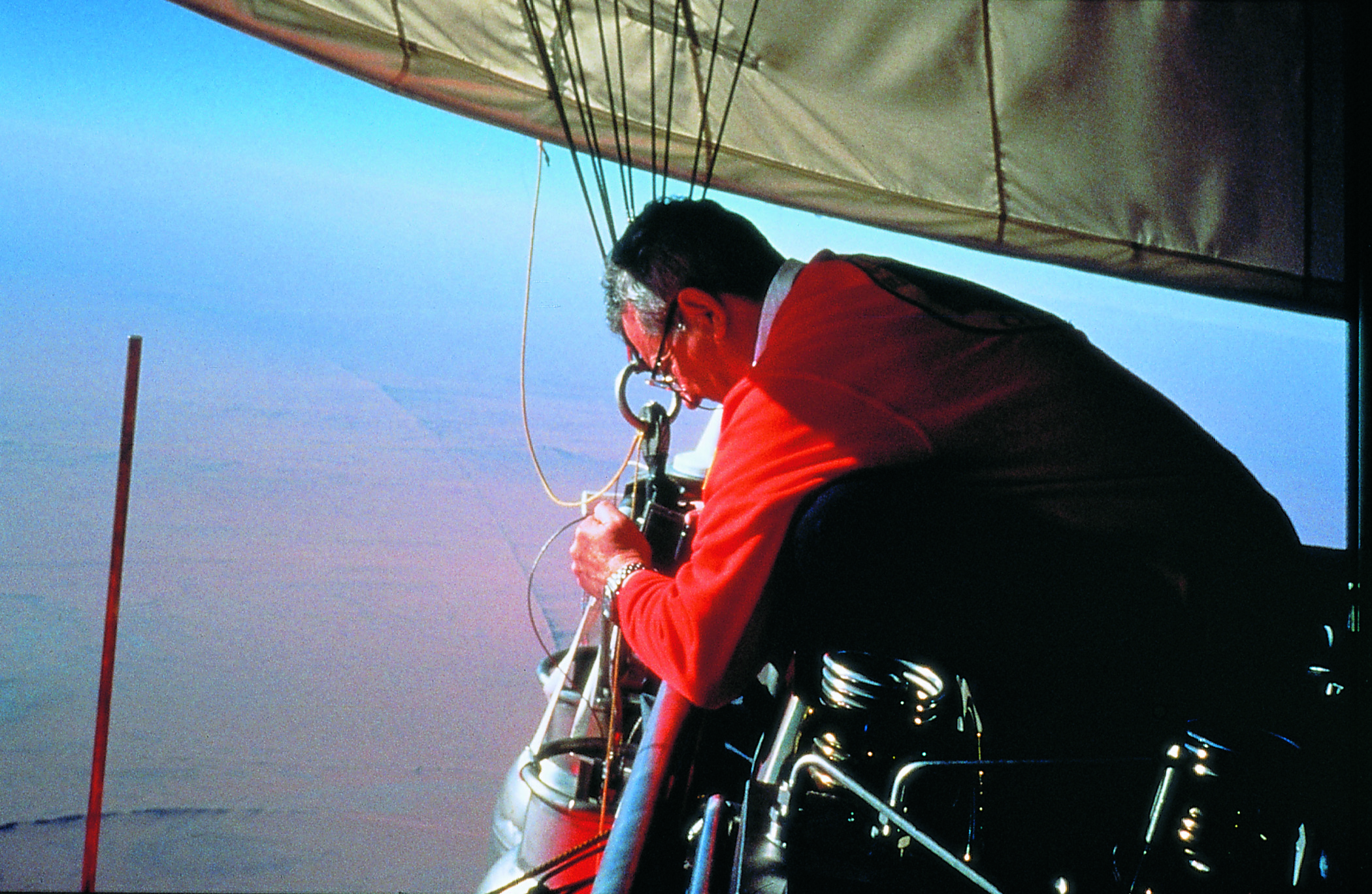
But we had a team over there; we had weathermen, we had air traffic controllers. I had to negotiate the overflight permissions with China in advance. So altogether it was a fantastic lesson on how to set up a project like that. I learned a lot. And when I’m speaking of the team to succeed, my wife, Michèle, was of course an important member of the team. And you never succeed in an adventure like that despite your family—you succeed thanks to your family.
How did you celebrate the victory?
Just after landing on the 21st of March, I was invited to The Explorers Club to celebrate. One thing that’s associated with this success is the invitation to The Explorers Club. Three or four days after my landing, it was so tight that they put me on the Concorde to get to New York on time to receive the membership of The Explorers Club, to receive The Explorers Club medal. And knowing that my grandfather was a member of The Explorers Club, my father was a member of The Explorers Club, to be celebrated there was the highlight of it.
So the 21st of March is important for the flight, but important also for all that happened around this flight, and The Explorers Club and the next adventure. That was the Solar Impulse flight, to fly around the world with no fuel. Because of course if you are afraid for 20 days to fall short of propane gas, the following time you want to fly with no fuel to not be afraid. So that was Solar Impulse—the project that we launched to fly around the world with a solar airplane. That was eight years ago. And we now have another project, the Climate Impulse.
Both your grandfather and father were in The Explorers Club. That’s a strong legacy.
Yeah, that was important also. My grandfather made the first flight in the stratosphere, and my father made the first dive to the Mariana Trench. So I had this inspiration, and of course I wanted to continue this way of living, to be an explorer. For me it was so obvious to be an explorer, and I wanted to continue this spirit.
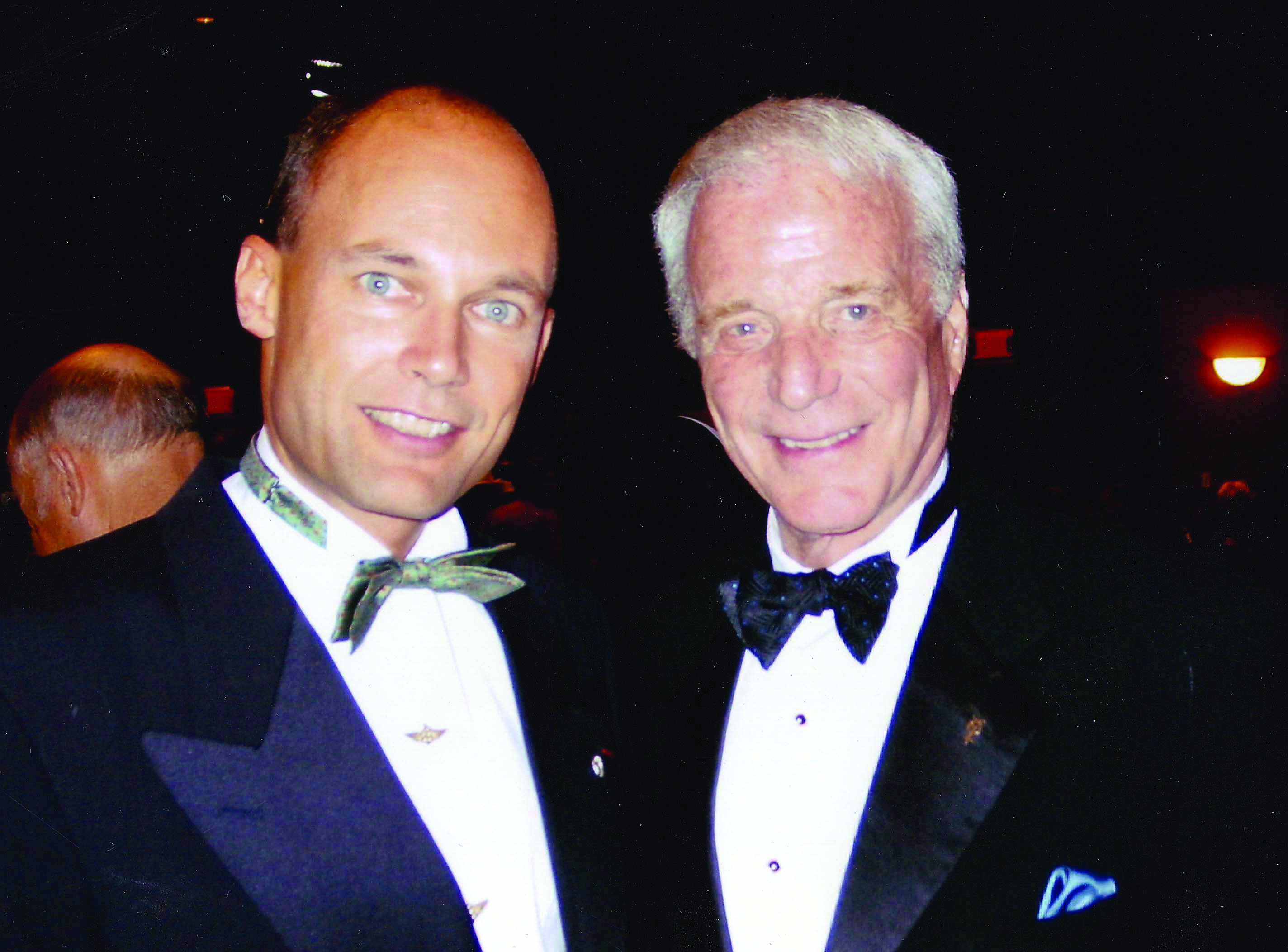
That must have put exceptional pressure on you as well.
Yes. The pressure came from the external parts, not from the family. In the family my father was always supportive. He told me, “Don’t feel obliged to do the same.” He was open. But the rest of the people around me, of course, they were having a lot of expectations. And the two times I failed I was hearing, “Oh, he’s not as good as his father and grandfather.” And when I succeeded people said, “Oh, it’s normal, it’s from the family.”
If you’re completely honest, would you have felt like a failure?
It would have hurt a lot, and there was big pressure. It was not taken for granted, even the success of the third attempt. On the 17th day over Mexico, we lost the good winds. We were drifting to the south, low speed, in perdition. I was thinking, “Okay, after 17 days of flight, so close to Africa, that’s horrible.” And at the last moment I pushed the balloon the highest it could fly, the last 50 meters, and it turned left, and I was pulled into the jet stream again and succeeded. But I was in tears. I thought, “Okay, now we’re finished!” It’s not always easy.
Are you saying you wouldn’t have tried again if you hadn’t been successful?
Me, yes, but the sponsor, no. Breitling was generous; they were supposed to pay for one balloon, and they paid for three balloons. But at the third attempt they said, “Okay, if you don’t succeed it means we cannot do it because everybody’s failing. So maybe it’s not yet possible with the technologies we have.” So when I took off I knew it was my last attempt. And this is very stressful.

Did you ever collaborate with Steve Fossett, or were you always competitors?
We were friendly competitors. He came to my house; we did nice things together. Each time he or me was failing we called each other to comfort, console. We were rivals but friendly. And Richard Branson also. The media wanted to pit us against each other, with Richard Branson and Steve Fossett. They wanted to make a war where we would insult each other, but we never fell in that trap and we were always good friends, and it was much easier.
“THE BIG COMPETITORS WERE RICHARD BRANSON AND STEVE FOSSETT, BILLIONAIRES WITH BIG TEAMS.”
What was the congratulatory call from Richard Branson like? That has to be a great feeling.
Better than a call: He came! After I landed in Egypt, Breitling took us back to Geneva the next morning for the celebration, and Richard Branson was there with a huge bottle of Champagne to celebrate our success.
Did you ever entertain the idea of ignoring a stop instruction and flying over a country if they said no?
No, but some countries had never given permission, neither a denial. For example, over Sudan there was no air traffic control and that was a bit more scary. From Egypt to Saudi Arabia we flew over Sudan, and they never answered. They didn’t care. So we were announcing on a regular basis with a VHF radio, “Calling all stations. We are here,” and giving our coordinates.
So if they don’t answer, that’s a yes for you.
As long as they don’t have the means to shoot you down. If North Korea does not answer, I stop.
Does that happen?
Yes, you can be shot down. There were some balloons in the Gordon Bennett race that were shot down over Belarus. American pilots representing the Virgin Islands, they were shot down by a military helicopter. Horrible. Both pilots killed. In ‘95, ‘96 I think. So almost 30 years ago. Belarus is not a country to play with. You know what happened over Morocco? We crossed Morocco with the permission, and after the crossing I was called by the Americans. They sent a fax and said, “Why did you fly over our most secret base?” And I answered, “I’m sorry. It was so secret I had no idea it was there.” And they said, “Okay, that’s a good reason. But now you know about it, so don’t do it again.” It was always nice with the Americans.
Was the next Solar Impulse project a greater challenge in terms of piloting or managing?
Yeah, Solar Impulse was much more technological, which means that there was much more bureaucracy, security, permissions. It was a nightmare. The flight was the gift, but before the flight was getting all the permissions, everybody agreeing, all the people afraid of having lithium batteries falling on their head. So Breitling Orbiter 3 balloon was very romantic, although it was difficult. Solar Impulse was very technical, very bureaucratic in terms of permission.
How helpful was Breitling in the process?
They were fully involved. They offered me aeronautical advisors, engineers. It was much more than financial; they were part of the team. This is why I liked them so much.
Was it easy to approach them?
Life is about encounters. The first time I was invited for a big balloon expedition, it was to cross the Atlantic in the first race, five balloons from America to Europe. I was a medical doctor working in a hospital with a small salary, and I approached Breitling because I knew the owner [Ernest Schneider] and I said, “Look, I just need two months of salary to get out of my job.” And Michèle was pregnant with our second child. And he said, “Okay, it’s my birthday today. I’m in a good mood, so I say yes.”
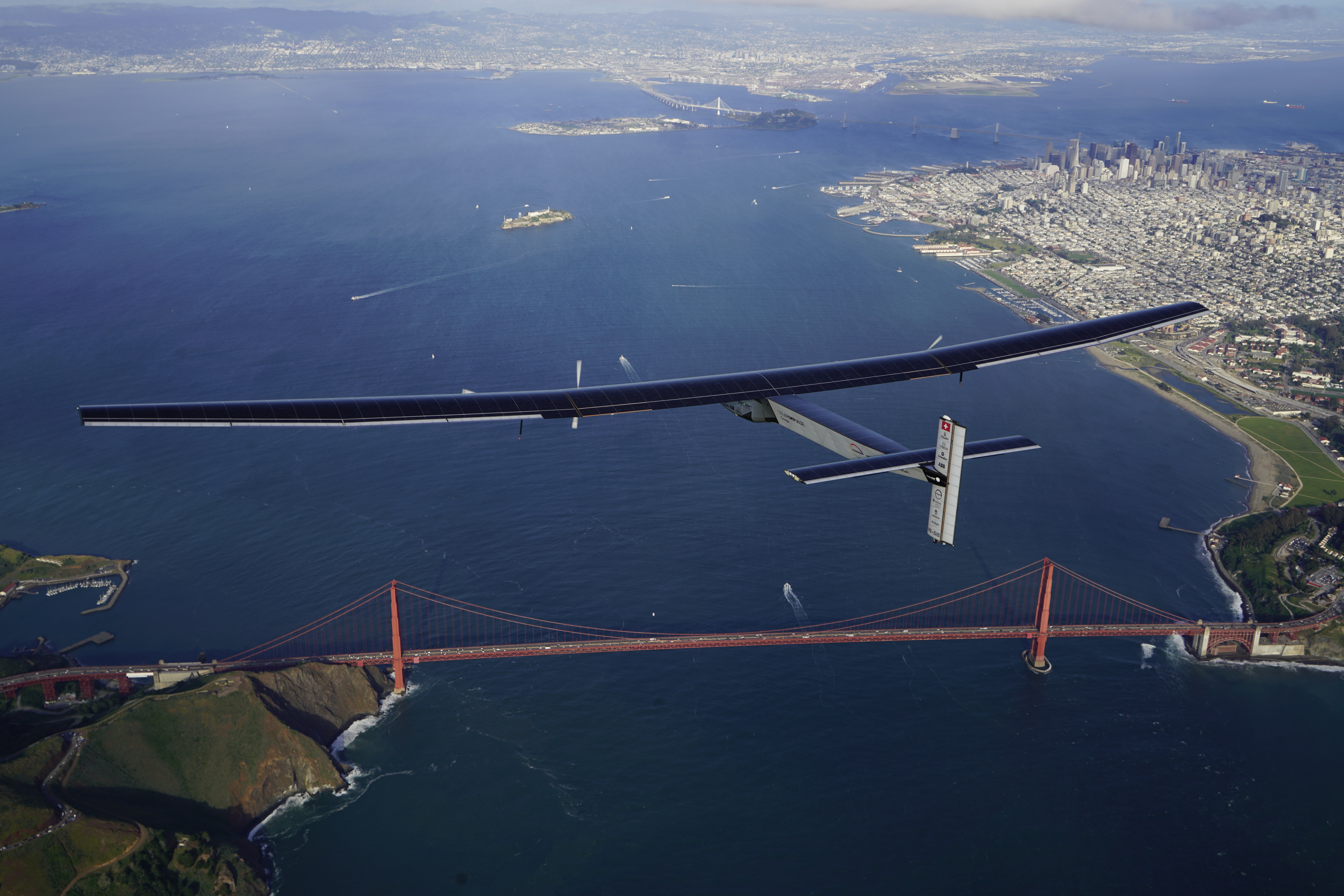
And then he forgot. And I was so grateful that I put Breitling logos everywhere—on my helmet, flying suits, on the capsule and everything. And then we won the race, so it was full of Breitling logos everywhere in the media. He was surprised, and he called me and said, “I completely forgot about that, but you did so good! If you have another project, tell me.” And I said, “Yeah, I have one now— around the world.” And that’s how we started the collaboration.
A lot of brands talk about adventure or pretend to do it. Breitling is really about that life.
I think there are two brands that really walk the talk in terms of exploration. It’s Breitling and Rolex. Rolex is doing great also. It’s a good brand.
Today on this 25th anniversary, how do you personally balance looking back at this major accomplishment while still looking forward?
Because now I am launching Climate Impulse, a new project to fly around the world in a hydrogen airplane. It is true that success is not a goal in itself—success is what allows you to continuously do better. Because with the success you have more experience, you are more credible, people trust you more. You can always do better, thanks to the success.
So after the success of the Breitling Orbiter 3 balloon I could launch Solar Impulse, fly around the world in a solar-powered airplane. And that success allowed me now to launch a new project, Climate Impulse, which is around the world, nonstop, in a hydrogen airplane. So nonstop zero emissions, and show that today we have solutions to decarbonize aviation, to be clean in what we do. So it’s a way to be a flagship for protection of the environment.
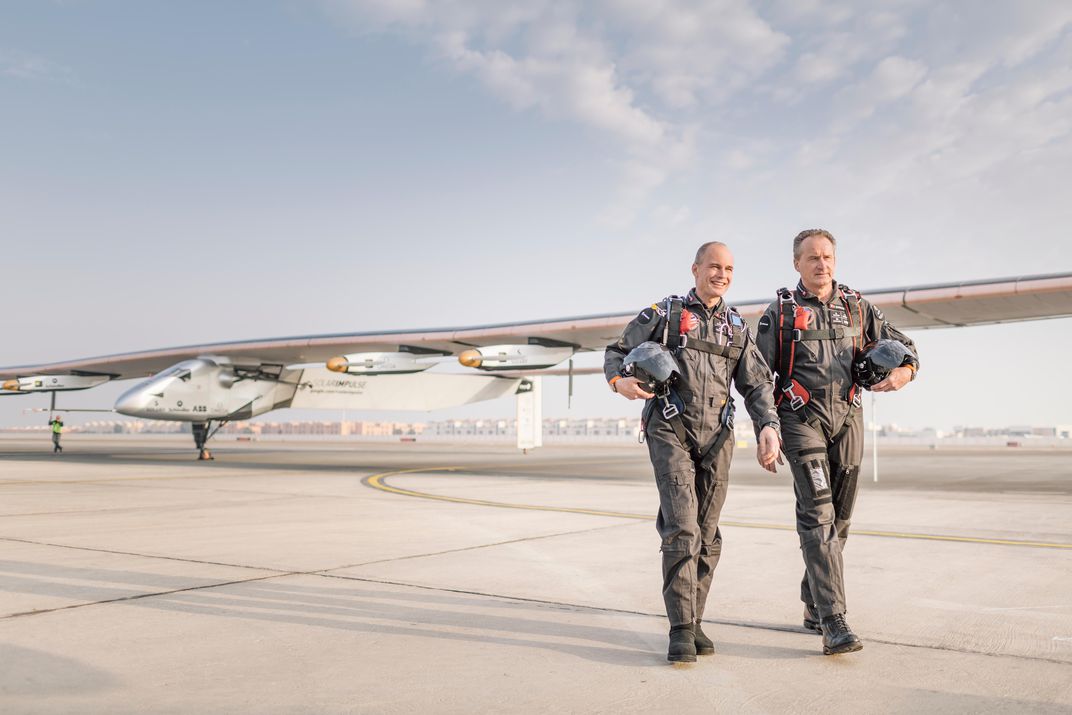
This article originally appeared in the July/August 2024 issue of Maxim magazine.
Follow Deputy Editor Nicolas Stecher on Instagram at @nickstecher and @boozeoftheday.





![[FEB] Oaksmith Gold Whisky Price in India 2025 | Prices List](https://images.dappier.com/dm_02hr75e8ate6adr15hjrf3ikol/Oaksmith-Gold-Whisky-Price-in-India_.jpg?width=428&height=241)
![[FEB] Blacksmith Whisky Price in India 2024 | Prices List](https://images.dappier.com/dm_02hr75e8ate6adr15hjrf3ikol/Blacksmith-Whisky-Price-in-India_.jpg?width=428&height=241)